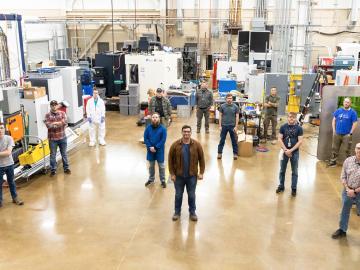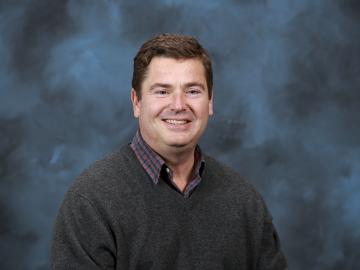
Filter News
Area of Research
- Advanced Manufacturing (4)
- Biology and Environment (55)
- Biology and Soft Matter (1)
- Computational Engineering (1)
- Computer Science (5)
- Electricity and Smart Grid (1)
- Energy Science (113)
- Energy Sciences (1)
- Fuel Cycle Science and Technology (1)
- Functional Materials for Energy (2)
- Fusion and Fission (32)
- Fusion Energy (11)
- Isotope Development and Production (1)
- Isotopes (28)
- Materials (101)
- Materials for Computing (9)
- Mathematics (1)
- National Security (29)
- Neutron Science (31)
- Nuclear Science and Technology (39)
- Nuclear Systems Modeling, Simulation and Validation (1)
- Quantum information Science (9)
- Supercomputing (87)
News Topics
- (-) Clean Water (33)
- (-) Cybersecurity (35)
- (-) Energy Storage (114)
- (-) Frontier (64)
- (-) Isotopes (62)
- (-) Nuclear Energy (122)
- (-) Physics (69)
- (-) Quantum Science (92)
- (-) Space Exploration (26)
- 3-D Printing/Advanced Manufacturing (146)
- Advanced Reactors (40)
- Artificial Intelligence (131)
- Big Data (79)
- Bioenergy (112)
- Biology (128)
- Biomedical (73)
- Biotechnology (39)
- Buildings (74)
- Chemical Sciences (86)
- Composites (35)
- Computer Science (226)
- Coronavirus (48)
- Critical Materials (29)
- Education (5)
- Element Discovery (1)
- Emergency (4)
- Environment (218)
- Exascale Computing (67)
- Fossil Energy (8)
- Fusion (66)
- Grid (74)
- High-Performance Computing (130)
- Hydropower (12)
- Irradiation (3)
- ITER (9)
- Machine Learning (68)
- Materials (157)
- Materials Science (158)
- Mathematics (12)
- Mercury (12)
- Microelectronics (4)
- Microscopy (56)
- Molten Salt (10)
- Nanotechnology (64)
- National Security (86)
- Neutron Science (171)
- Partnerships (68)
- Polymers (35)
- Quantum Computing (53)
- Security (31)
- Simulation (65)
- Software (1)
- Statistics (4)
- Summit (71)
- Transportation (103)
Media Contacts

Oak Ridge National Laboratory researchers have developed a new family of cathodes with the potential to replace the costly cobalt-based cathodes typically found in today’s lithium-ion batteries that power electric vehicles and consumer electronics.

Porter Bailey started and will end his 33-year career at ORNL in the same building: 7920 of the Radiochemical Engineering Development Center.

A new study clears up a discrepancy regarding the biggest contributor of unwanted background signals in specialized detectors of neutrinos.

The INFUSE fusion program announced a second round of 2020 public-private partnership awards to accelerate fusion energy development.

East Tennessee occupies a special place in nuclear history. In 1943, the world’s first continuously operating reactor began operating on land that would become ORNL.

Researchers at Oak Ridge National Laboratory are developing a first-of-a-kind toolkit drawing on video game development software to visualize radiation data.


The University of Texas at San Antonio (UTSA) has formally launched the Cybersecurity Manufacturing Innovation Institute (CyManII), a $111 million public-private partnership.

Paul J. Hanson, ORNL Corporate Fellow, has been elected to the 2020 Class of Fellows of the American Geophysical Union.

David Kropaczek, director of the Consortium for Advanced Simulation of Light Water Reactors, or CASL, at the Department of Energy’s Oak Ridge National Laboratory, has been named a fellow of the American Nuclear Society.


